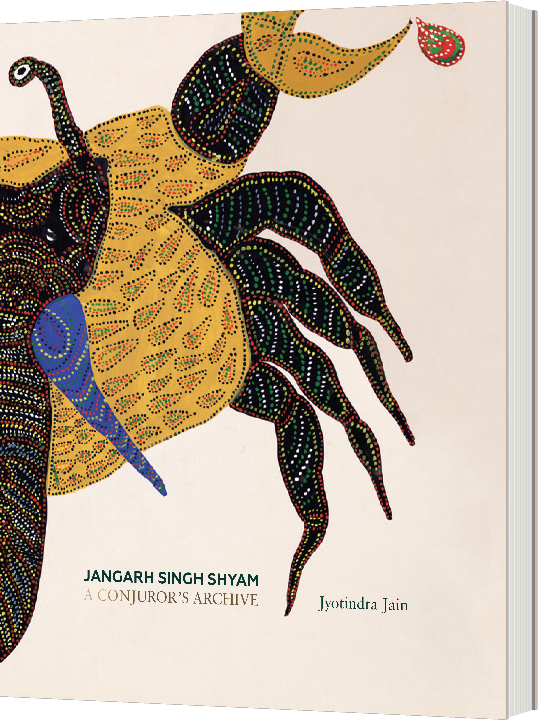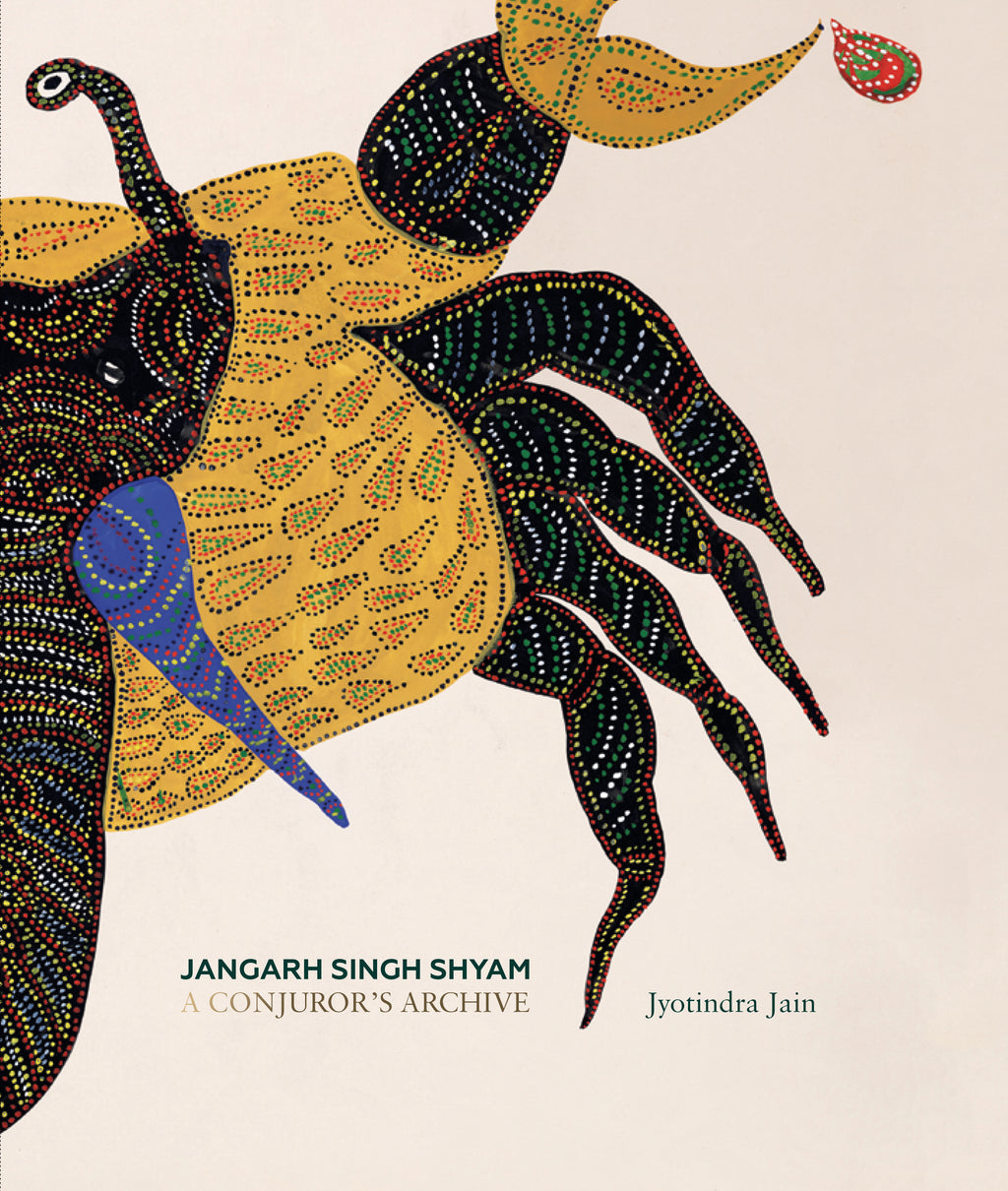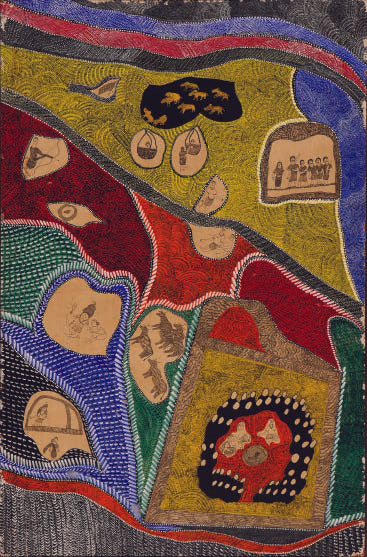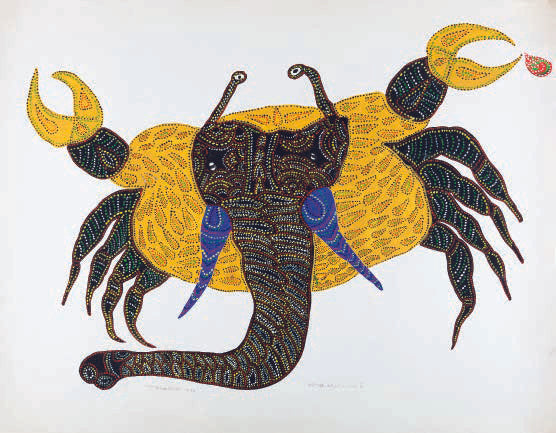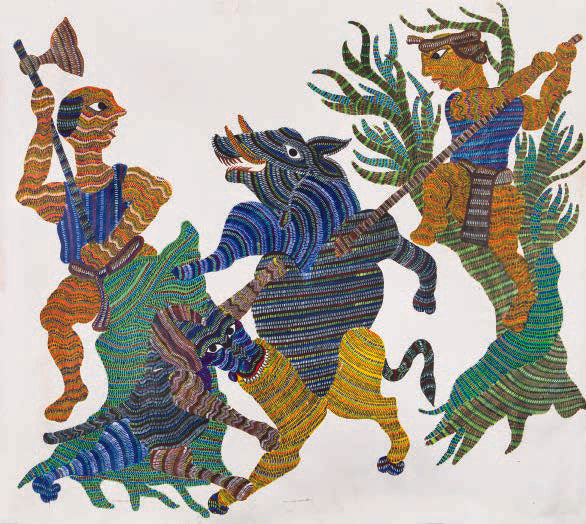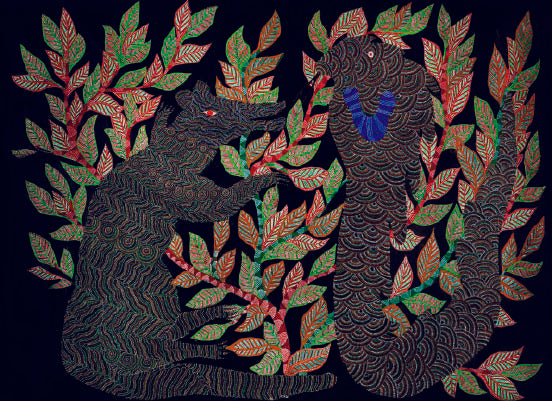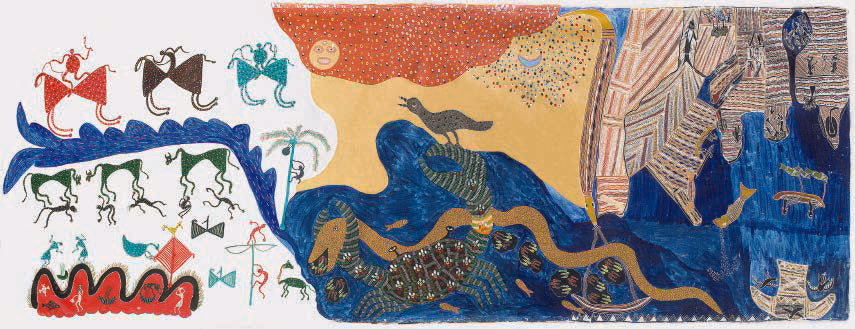Jangarh Singh Shyam
A CONJUROR’S ARCHIVEBefore any sound critical framework could be evolved around the phe-nomenal artist.
- Category: All Books, Art, Artist Monographs, Festive Gifting
A whole range of conditions, events and mediations associated with Jangarh’s life and his art practice has since remained underexplored. This book is a first attempt to construct an equitable account of the formation of his prodigious artistic body of work that founded his legacy and grew into a movement.
As a prime critical analysis of Jangarh Singh Shyam’s oeuvre, this book also serves as a model framework for the study of a contemporary indi-vidual folk and tribal artist. Unlike other vernacular artists, Jangarh’s muse was moulded at Bharat Bhavan, a multi-arts complex in Bhopal, where he arrived as a teenager on modernist artist J. Swaminathan’s prompting. Here, though subtly othered by the commanding presence of the art-school-trained moderns, Jangarh responded with a sense of ela-tion to various new mediatory processes, such as the use of bright poster colours and the milky white expanse of paper, which led him to say, “The first time I dipped my brush in bright poster colours in Bhopal, tremors went through my body.”
The book probes the efficacy of extra-cultural interventions into an indi-vidual artist’s operative and relatively well-grounded indigenous cultural tradition, and asks how the latter interacts with the new, while intention-ally reinventing itself.
Equipped with a powerful sensibility and a profound nostalgia for the world of his native village of Patangarh that he left behind, Jan-garh created, over two decades in Bhopal, a sea of paintings inhabited by gods and demons, shamans and priests, birds and animals — crabs, scorpions, lizards and crocodiles — as well as forests, trees and shrubbery. The entire realm that had remained latent in his mind’s eye over the years thus came to life, image by image, in response to the new and alluring space of paper, canvas or the expansive walls that he turned into a vast and unique conjuror’s archive — opening up a personal space from where to speak.
Jyotindra Jain, formerly Director of the Crafts Museum; Professor and Dean at the School of Arts & Aesthetics, Jawaharlal Nehru University (JNU); and Member Secretary of the Indira Gandhi National Centre for the Arts, all in New Delhi, was a Visiting Professor at Harvard University and a Rudolf-Arnheim Professor at Humboldt University, Berlin. An em-inent scholar of Indian art and popular visual culture, Jain has published extensively in the areas of his specialisation, and curated exhibitions for some of the most prestigious cultural institutions and museums in India and abroad.
A recipient of the 1998 Prince Claus Award for Culture and the Cross of the Order of Merit of the Federal Republic of Germany in 2018, he is presently a Member of the International Advisory of the Humboldt Forum, a multi-arts complex in Berlin; a Tagore National Fellow; and Co-Editor of Marg Publications, Mumbai.
• THE MOULDING OF THE MUSE
I. Bharat Bhavan and the Art vs. Ethnography Discourse
II. Jangarh’s ‘Discovery’
III. Multiple Mediations and the ‘Secularising’ Processes in Jangarh’s Work
IV. Visualising his Gods
V. Printmaking
VI. Jangarh, Theatre and Music
VII. The Vidhan Bhavan Mural Project (1996) and the Consolidation of the Pardhan Idiom of Painting
VIII. The Narrative Turn
IX. Retrieving the World Left Behind: A Place from Where to Speak
X. A Conjuror’s Archive
• TRAPPED IN CROSSING
I. Jangarh’s Letter to his Mother
II. Jangarh’s Letter to his Wife, Nankushiya
III. The Letter from the Mithila Museum, Japan
• AFTERWORD
I. Ram Singh Urveti
II. Anand Shyam
III. Bhajju Shyam
IV. Narmada Prasad Tekam
V. Mayank Shyam
VI. Dileep Shyam
BIBLIOGRAPHY
ACKNOWLEDGEMENTS
| ISBN | 9789385360633 |
| Pages | 178 |
| Number of illustrations | 90 |
| Size | 8.5 x 11.5" (222 x 292 mm), hc |
| Date of Publishing | 2018 |
| Language(s) | English |
| Co-publisher(s) | Mapin and in association with Museum of Art and Photography (MAP), Bangalore. |
| Rights Available | World rights |
—Jaya Bhattacharji Rose, Deccan Chronicle





